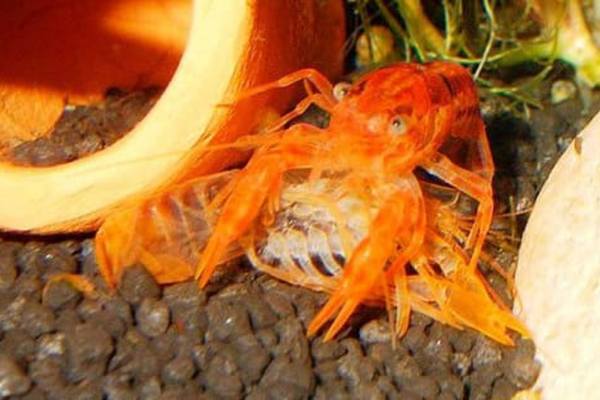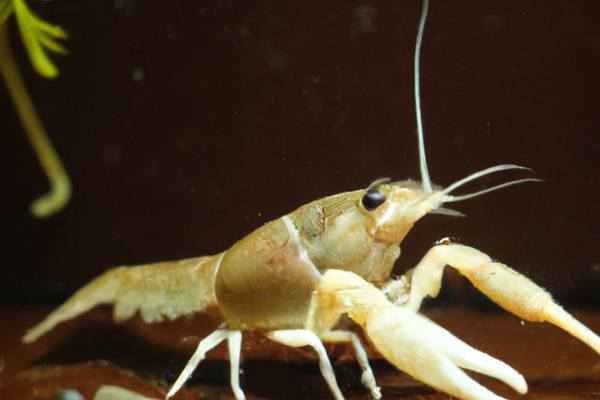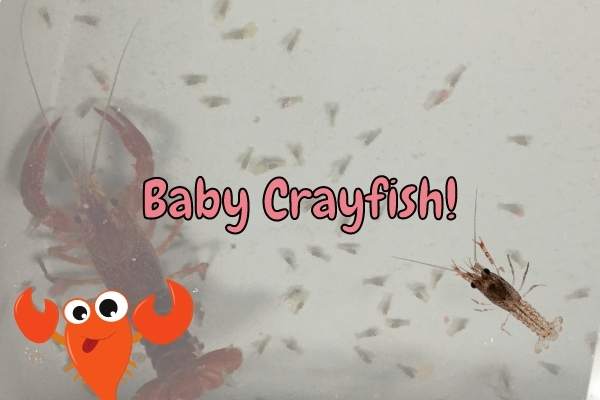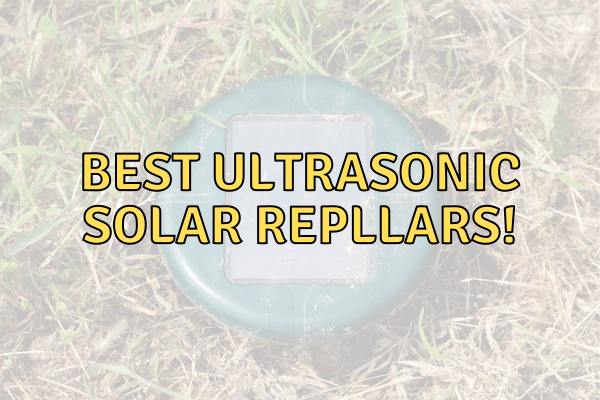Do you ever wonder what crayfish do with their old shells when they molt? This article will explore the little-known behavior of crayfish feasting on their molts and the implications it has for their overall health.
Yes! Crayfish do eat their own molts and they do so to distract predators and get back crucial nutrients to support their growth and survival.
We’ll look at why crayfish eat their molt, what nutrients and minerals they absorb, and how to avoid nutritional deficiencies in crayfish when they eat their molt. So, let’s dive into this fascinating behavior and learn more about crayfish and their molting habits.
Contents
Why do crayfish eat their molt?
Crayfish are famously known for their ability to molt and grow new shells, but recent research has shown that they also have an unexpected habit when it comes to molting – they eat their own shells! This surprisingly unusual behavior has raised some important questions as to what drives this behavior, and what the implications might be for their conservation and protection.
At first glance, it’s easy to assume that crayfish are eating their shells to get extra nutrients that may be leftover from their previous shell.

This is a reasonable assumption, as shells do contain calcium and other minerals that may be beneficial to the crayfish. However, research shows that the primary reason why crayfish eat their shells is due to their need to maintain the correct balance of minerals and other substances in their body.
When a crayfish molts, it sheds its old shell and grows a new one. The old shell is very rich in minerals and other substances that the crayfish needs to stay healthy and balanced. In order to replenish these minerals, the crayfish will eat the shell that it just shed. This provides it with the minerals that it needs to stay balanced and healthy.
Another reason why crayfish eat their shells is to protect themselves from predators. The old shell can provide the predators with clues of the nearby presence of the crayfish.
Finally, it is believed that crayfish may also be eating their shells as a way to maintain the correct pH levels in their body. This behavior is thought to be triggered when the pH levels in the body become too low or too high. By eating their own shells, crayfish can help to regulate their pH levels and keep them balanced.
In conclusion, the practice of crayfish eating their own shells is an intriguing phenomenon that has raised some important questions. It appears that this behavior likely serves multiple purposes, from replenishing minerals and other substances in the body to providing protection from predators and regulating pH levels.
Nutrients and minerals
Crayfish are a unique species of aquatic crustacean, found in many freshwater and coastal habitats around the world. Due to their importance in the wild, their nutritional needs are of particular interest to biologists and aquarists alike. As crustaceans, crayfish require a diet high in minerals, such as calcium, phosphorus, magnesium, and iron, to support healthy growth and development.

One of the most fascinating aspects of crayfish nutrition is their ability to consume their own molts, or discarded shells. This behavior is known as autotomy and it occurs when a crayfish sheds its exoskeleton and eats it. Some crayfish species, such as Procambarus clarkii, will even ingest their molts for up to two days after shedding.
So, why do crayfish eat their own molts? The answer lies in the fact that these discarded shells are a valuable source of nutrients, minerals, and other dietary components. In fact, crayfish have been shown to absorb calcium, phosphorus, and other minerals more efficiently when consuming their own molts, compared to when they are fed a standard commercial diet.
Crayfish molts also contain other important components, such as amino acids, fatty acids, and vitamins, which can be beneficial for their overall health. Furthermore, the presence of chitin, a type of fiber found in the exoskeleton, can help support the health of their chitin-digesting bacteria, which are essential for the proper function of their digestive system.
In conclusion, consuming their own molts is an important part of crayfish nutrition, as it provides a valuable source of minerals and other dietary components. Therefore, it is important to provide crayfish with their own molts when keeping them in an aquarium or other captive environment. This will ensure that they are getting the essential nutrients they need to stay healthy and thrive.
Shell maintenance
Crayfish are known for their hard shells, which help protect them from predators and other dangers. But many crayfish species must shed their shells regularly to accommodate growth, a process known as molting.

During this process, the crayfish becomes very vulnerable, as the new shell is softer and not yet fully formed. To help protect themselves during this time, some crayfish species have developed an interesting behavior – eating their own shells during molting.
The idea of crayfish eating their own shells has been around for centuries, and the practice has been observed in many different species. In some cases, the crayfish will consume the entire molted shell, while in others only parts of it will be eaten. The parts that are eaten vary depending on the species, but are typically found around the head and the legs.
So why do crayfish eat their own shells? One theory is that the extra calcium helps the crayfish to form a new, hard shell faster. The calcium also helps to keep the crayfish healthy between molts, as it is an essential nutrient for crayfish. Additionally, by eating the old shell, the crayfish prevents predators from trying to exploit its vulnerability.
Another benefit of shell eating is that it can reduce the amount of time that the crayfish is in a molting state. This is because when it eats the shell, it’s able to start forming the new shell immediately instead of having to wait for calcium to be absorbed from outside sources.
It’s important to note that crayfish are not the only species that eat their own shells. Other crustaceans, such as crabs and lobsters, also display this behavior. While the motivations may be different for each species, the overall goal is the same – to quickly replace the lost shell and remain safe from predation.
So while it may seem strange, it is clear that shell eating can be beneficial for crayfish. Not only does it provide them with the nutrients they need to form a new shell, but it also ensures that they can remain safe from predators during the vulnerable molting stage.
Does eating the molt hurt the crayfish?
Eating the molt does not harm the crayfish physically, as crayfish are able to digest their own shells. However, there can be some potential drawbacks to crayfish feasting on their molts.
Firstly, the crayfish may be consuming important minerals that are crucial for their growth, such as calcium and magnesium, that are found in their shells.
Secondly, the shells may contain trace amounts of toxins and pollutants, depending on where the crayfish live and what is in their environment. Therefore, the crayfish may be ingesting unnecessary toxins and pollutants if they eat their molts.
In addition, crayfish may also be consuming parasites or diseases that have infected the shells of their molts. These parasites can be transferred to the crayfish and cause health issues. Furthermore, if the crayfish ingest too much of the shell, they may have difficulty digesting the material and suffer from digestive problems.
Overall, it is important for crayfish to be mindful when eating their molts, as consuming too much can have adverse effects. It is best for the crayfish to only consume the parts of the shell that are free of parasites, toxins and pollutants to minimize any potential health risks.
Nutritional deficiency
Nutritional deficiency is a common issue that can affect the health of crayfish, as well as other animals. Crayfish have a wide range of dietary needs, and if they are not met, they can suffer from a variety of deficiencies. As crayfish shed their shells, they expose their soft bodies to predators, but they also consume their own discarded shells. This practice can help them supplement their diet in times of need.
In order to understand the effects of nutritional deficiency on crayfish, it is important to understand their dietary needs. Crayfish need a balanced diet that includes both proteins and carbohydrates.
Protein is essential to the growth and development of the crayfish, while carbohydrates provide the energy they need to survive.
Additionally, they require minerals and vitamins, as well as a source of fiber. Without these key components, the crayfish can suffer from a variety of symptoms, ranging from stunted growth to death.
When crayfish are unable to obtain their needed nutrients from other sources, they will consume their own discarded shells.
This is known as molting, or feasting on molts. It allows them to obtain essential nutrients in times of need. However, this practice can also cause some nutritional deficiencies, as the shells contain only limited amounts of nutrients.
Despite the nutritional deficiencies caused by molting, research has shown that it is still an important part of the crayfish’s diet. In fact, molting is often more beneficial than not molting at all, as it can provide some essential nutrients to the crayfish.
Additionally, studies have shown that if the crayfish are fed a normal diet, they will generally not consume their own shells.
Overall, nutritional deficiency is a common issue that can affect the health of crayfish if their dietary needs are not met. Molting, or feasting on their own discarded shells, can provide some nutritional benefits, though it can also lead to some nutritional deficiencies. Therefore, it is important that crayfish are provided with a balanced diet that meets their dietary needs.
Reproductive effects
When it comes to reproduction, crayfish can have a variety of effects on their environment and the organisms living in it. One of the most fascinating and unique effects of their behavior is that they are capable of eating their own molts.

Molts are the outer shells of crustaceans, which are shed during growth and molting periods. This behavior can have a variety of effects on the growth and survival of the organisms in an ecosystem, making it important to understand the reproductive effects of crayfish.
The most obvious reproductive effect of crayfish eating their own molts is an increase in the rate of growth. This is due to the fact that the shell of the crayfish contains high levels of calcium, which is necessary for the development of their shells.
By eating their own shells, the crayfish are able to rapidly replenish their stores of calcium, allowing them to grow at a faster rate. Additionally, it also helps to reduce the amount of waste material in the environment, as the shell is typically decomposed by other organisms before it is consumed.
Another reproductive effect of crayfish eating their own shells is the potential for increased competition for resources. Crayfish are territorial animals and will defend their territory from other species, including other crayfish.
By consuming their own shells, they reduce the number of shells available for other species to use as homes, thus reducing the amount of resources available to those species. This could lead to an increase in competition between species for resources and a decrease in overall biodiversity in the ecosystem.
Finally, crayfish consuming their own shells can also have an effect on the reproductive cycle of other species in the ecosystem.
For example, if other species rely on the shells of crayfish to develop their own shells, the lack of available shells could inhibit their ability to reproduce.
Additionally, if other species rely on the waste material from the shells of crayfish for food, the lack of available shells could reduce the amount of food available to them.
Overall, crayfish eating their own shells can have a variety of effects on their environment and the organisms living in it. These effects can range from increased growth rates to increased competition for resources, as well as a decrease in overall biodiversity. Understanding the reproductive effects of crayfish can help us to better understand the dynamics of an ecosystem and the interactions between species.
Is there an alternative to eating the molt?
When it comes to crayfish molts, the question of whether or not the crustaceans actually eat their own shells has been a subject of debate for some time.
While some evidence suggests that crayfish do indeed consume their own shells, a closer look reveals that this behavior is not as common as previously thought. In fact, there are several other sources of nutrition available to crayfish that may provide a more viable alternative to self-molt consumption.
One possibility is the consumption of aquatic plants. Crayfish often feed on submerged aquatic vegetation and algae, which can provide essential nutrients and energy.
Additionally, the presence of these plants stimulates the growth and development of beneficial bacteria in the aquatic environment, which in turn can provide an additional source of nutrition for crayfish.
The presence of these types of plants also helps to maintain a healthy balance in the aquatic ecosystem, as the presence of plant life provides both habitats and food for other aquatic organisms.
Another potential source of nutrition for crayfish is detritus, which consists of organic matter that has been broken down by decomposers. This detritus is typically made up of a variety of sources, such as leaves, twigs, and other organic matter.
By consuming detritus, crayfish are able to obtain valuable sources of nutrition from the environment without having to resort to self-molt consumption. Additionally, the presence of detritus can also help to keep the aquatic environment in balance, as it serves as a food source for other organisms.
Finally, the consumption of aquatic invertebrates is another possible source of nutrition for crayfish. Many types of aquatic invertebrates, such as worms and insect larvae, are an excellent source of nutrition for crayfish.
These types of creatures are often found in the same environment as crayfish, and they can provide essential nutrients and energy to the crayfish without the need to resort to self-molt consumption.
In conclusion, there are a variety of alternative sources of nutrition available to crayfish that do not involve the consumption of their own shells. By taking advantage of these alternative sources, crayfish can obtain essential nutrients and energy without resorting to self-molt consumption.
Supplementation
Crayfish are crustaceans known for their hard shells, which they molt and shed periodically as they grow. But do they actually eat their own shells after they shed them? To answer this question, we must look at what they actually feed on as well as how they supplement their diets.
Crayfish are omnivores and scavengers and generally feed on decaying vegetation, small aquatic insects, worms, snails, and other small animals. They rely heavily on algae for sustenance but will supplement their diets with a variety of other aquatic invertebrates when necessary. However, their diet does not typically include their own molted shells.
Crayfish will sometimes nibble on their own shells, but this is mainly for the purpose of cleaning or grooming, not for sustenance. They will also sometimes feed on shells of other crayfish or dead animals, but again, only as a complement to their normal diet.
Still, some researchers have found evidence that crayfish may be able to extract nutrients from their own shells, suggesting that they may in fact be using these shells as a supplemental food source. Studies have found that crayfish are able to digest certain proteins found in the shells, as well as other minerals such as calcium and phosphorus.
While the exact extent to which crayfish may be supplementing their diets with their own shells is not known, it is clear that they are not relying solely on this method for sustenance. Crayfish are still mainly dependent on the wide variety of aquatic invertebrates they feed on.
Overall, while crayfish may nibble on their own shells, they are not likely feasting on them for sustenance. The extent to which they use their shells as a supplement to their normal diet is not clear at this point, but further research may help us better understand this behavior.
Calcium Rich Prey Organisms as a Food Source
Calcium is an essential nutrient for animals, especially those with hard exoskeletons like crustaceans. In order to ensure they remain healthy and well-armored, crayfish seek out calcium rich prey organisms and incorporate them into their diets. While they may find this mineral in a variety of sources, the most abundant and readily available are the shells of molting or deceased organisms.
Molting is a process in which a crayfish sheds its exoskeleton in order to grow. This process is accompanied by the hardening of the new shell after it forms. As a result, the discarded old shell is left behind and can be consumed by the crayfish, providing it with much needed calcium and other trace minerals. By eating the shells of other molting or deceased organisms, the crayfish can get the calcium it needs to stay healthy and well-armored.
In addition to dead or molting shells, crayfish may also obtain calcium from other sources such as mollusks and other invertebrates. These organisms usually shed their shells during molting or death, leaving behind the calcium-rich shells for the crayfish to consume. Mollusks, for example, typically have a thick layer of calcium carbonate in their shells, providing the crayfish with a dense source of calcium. Other invertebrates can also be eaten, providing the crayfish with an additional source of calcium.
Furthermore, crayfish can also get their calcium from other forms of marine life such as shrimp, crabs, and other small crustaceans. These animals often have a hard carapace filled with calcium carbonate, which makes them an excellent source of calcium for the crayfish. Even plants can provide the crayfish with calcium, as certain types of seaweed are high in the mineral.
In conclusion, crayfish are able to obtain the calcium they need to remain healthy and well-armored by feeding on molts, dead shells, mollusks, other invertebrates, and other sea life. All of these sources offer the crayfish a rich source of calcium, helping them to maintain their exoskeletons and stay healthy.
Conclusion
In conclusion, it is apparent that crayfish eat their molt for a variety of reasons. The main reason for this behavior is to obtain the essential nutrients and minerals found in the molt that are otherwise difficult to obtain from the environment.
Additionally, eating the molt helps to maintain the shell of the crayfish, allowing them to grow and mature. In some cases, however, the consumption of molt can lead to a nutritional deficiency in the crayfish, resulting in reproductive impairment.
This can be prevented, however, by providing alternative food sources that are high in calcium such as certain prey organisms. Supplementation with calcium-rich foods can also help to prevent this deficiency. Overall, it is clear that crayfish consume their molt for both nutritional and physiological purposes, making it an essential part of their diet.




